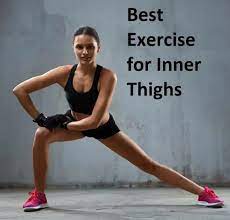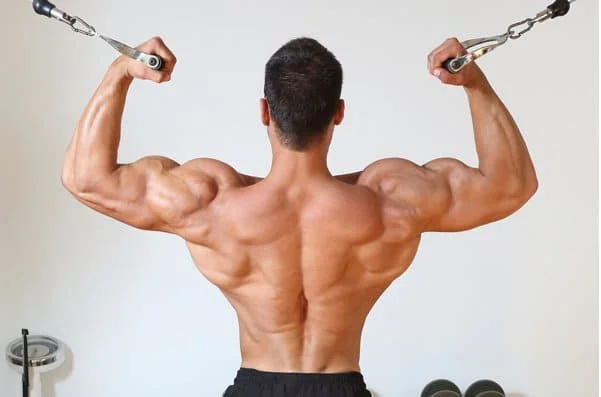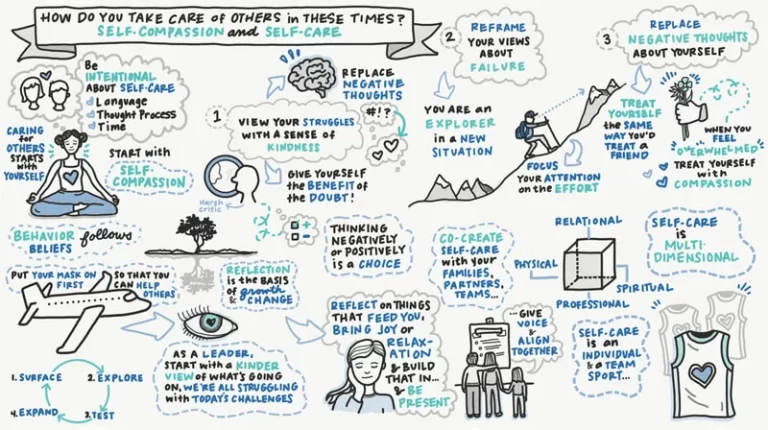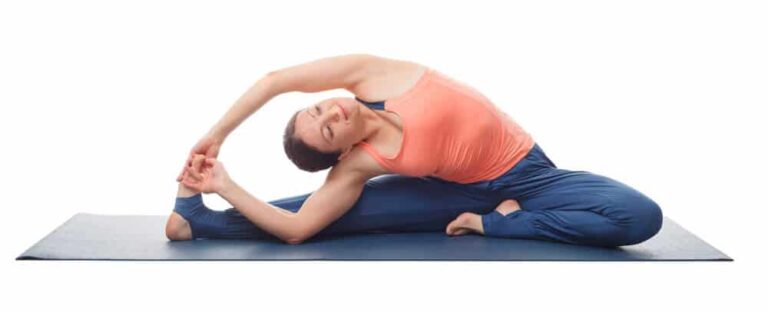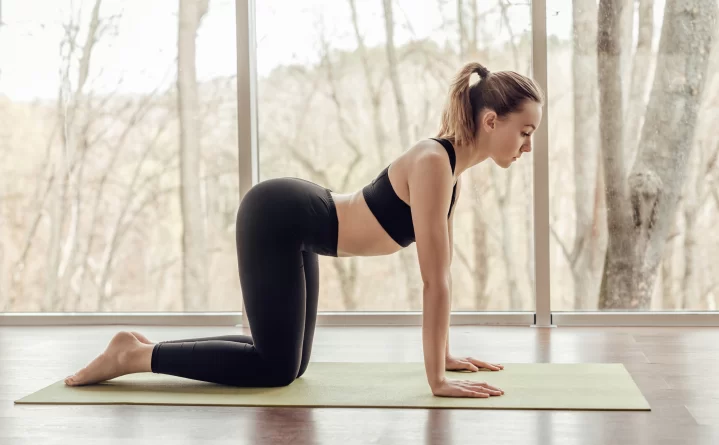20 Best Workouts for Inner Thighs
Welcome to the world of fitness, where sculpting strong and toned inner thighs is within your reach. The inner thigh muscles, or adductors, play a crucial role in stabilizing and supporting your body. Designing a well-rounded workout routine that targets these muscles can enhance both your strength and aesthetics. In this guide, we’ll explore an effective workout for your inner thighs that combines targeted exercises, proper form, and gradual progression.
As we explore the most effective exercise for your inner thighs, get ready to set off on a road to stronger, healthier legs.
What Is The Inner Thigh?
When your feet squeeze together, the portion of your legs that touches is the inner thigh. The area inside your leg known as the inner thigh extends from the pelvic bone to just above the knee.
Although the inner thighs are typically the focus of a person’s workout, they are a crucial area of the leg to concentrate on to help with strength development.
They are also necessary for having fluid movement in daily life.
What Are The Inner Thigh Muscles?
The gracilis, pectineus, adductor brevis, adductor longus, and adductor magnus are the five types of hip muscle groups that make up the inner thighs. From the pelvis, they run up to the thigh bone.
Gracilis: The superficial and medial inner thigh muscles are particularly superficial and medial. Adducting the thigh at the hip and flexing the leg at the knee are the actions of this muscle. It is essential for turning and flexing.
Pectineus: A small inner thigh muscle that aids in hip flexion and adduction.
Adductor Brevis: This muscle, which is located beneath the adductor longus, aids in hip flexion and adduction. The shortest muscle situated between the anterior and posterior obturator nerve segments is the adductor brevis.
Adductor Longus: It is a substantial flat triangle muscle that adducts the thigh and covers the adductor brevis and Magnus in part. It additionally includes the adductor muscle that is placed most anteriorly.
Adductor Magnus: It is the greatest inner thigh muscle and is located in the medial segment. It has a fan-like form. To achieve hip flexion, it collaborates with the hamstrings to adduct the thigh.
The obturator externus is another muscle involved in inner thigh adduction. Even though it isn’t one of the five adductor muscles, it nevertheless helps many of the adductor muscles and actions that are necessary for the inner thigh to work properly. The inner thigh muscle with the highest location is the one that is more closely associated with the hip joint than the inner thigh. It is a flat, triangular muscle that helps the thighs rotate laterally and adduct.
Main Benefits Of Inner Thigh Exercise:
- It is easier to maintain stability in other body parts and less likely to sustain injuries when you have powerful inner thighs.
- The strength of your inner thighs has an impact on your knees, hips, and lower back due to where the adductors are anchored. A strong core is supported by strong adductors, which also lessen the likelihood of recurring aches and pains elsewhere.
- Problems with the hips and lower back are common. Exercises for the inner thighs should be performed regularly as a prophylactic strategy.
Exercises for the Inner Thigh are:
Sumo Squat
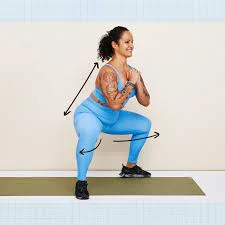
How to do the Sumo Squat:
- Step outward with your toes while keeping your feet wider than hip-width apart. If you’re using weights, place a dumbbell or kettlebell between your legs and hold it there with your left and right hands.
- When your thighs are perpendicular to the ground, gradually lower yourself to the ground by folding your knees and pushing them out. As you bend your knees, keep the weight centered and, if it’s possible, tap it repeatedly on the ground without releasing it.
- Slowly raise yourself back up by straightening your knees, maintaining a neutral spine, engaging your glutes, and squeezing your inner thighs.
Lateral Lunges
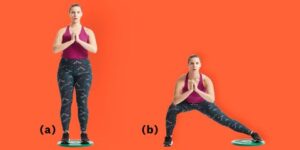
How to do Lateral Lunges:
- Stand with your feet hip-width apart and your hands either holding weights or on your hips.
- With both feet pointed straight ahead, take a big stride out to the left.
- Keeping a neutral spine, squat while lowering your hips and bending your knee.
- Straighten your right leg while bending your left leg to a 90-degree angle.
- Compress your inner thigh as you forcefully push off your left foot to bring it back to the center, keeping your weight on your glutes and inner thighs rather than your knee.
- Repetition as desired, then move to your right side.
Single Deadlift
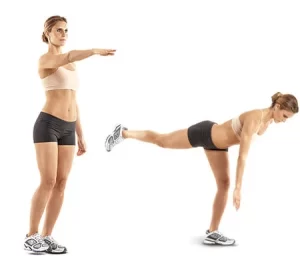
How to do the Single-Leg Deadlift:
- Knees should be slightly bent while you stand with your feet hip distance apart.
- Whenever you’re using weights, keep your arm erect and maintain the weight in your right hand at waist level.
- Hold your hips in line as you lean forward from the waist and extend your left leg beyond you.
- Hinge just till your hips start to turn or until the weight touches the floor.
- Regain your upright position while keeping your shoulders away from your ears and your spine neutral.
- As you lift to the starting posture, let the toes of the left foot float across the floor.
- Repeat the appropriate number of reps on the right side while using your right hand to hold the weight.
Bulgarian Splint Squat
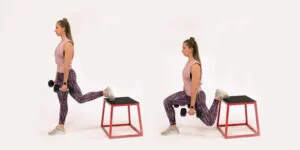
How to do the Bulgarian Split Squat:
- Turn your back on the box, chair, or bench you are using and stand there. Step out of your equipment with your right foot while placing the top of your left foot on the box, chair, or bench. Make sure there is sufficient space for you to comfortably crouch down between your right foot and the bench.
- Straighten your torso and engage your core. Slowly stoop down with your right leg at a 90-degree angle by bending your right knee.
- Put pressure on your right foot, then stand up again. Reps should be repeated on one side before switching to your left leg.
Jefferson Squat
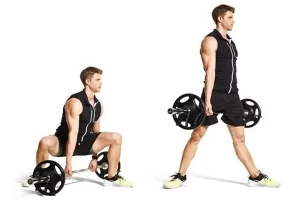
How to do the Jefferson Squat:
- Your choice of weight should be on the floor with a barbell. Your rear hip and foot should be rotated outward as you widen the position and straddle the barbell lengthwise. Nearly 90 degrees should be extended out from your back foot. Turn your upper body in the direction of your forward leg. To descend into a squat, you may need to modify your posture. Flat feet should be on either side of the barbell as it runs between your legs, with one foot on each side.
- Having your feet spaced shoulder-width apart and your knees slightly bent, your posture should be tall. Just above your hips should be your shoulders. Your elbows shouldn’t be locked and your arms should stay straight. Ensure that your core is active.
- Bend down and use a mixed grip to take hold of the barbell. Your back hand should be in an overhand grip on the barbell back you, and your front hand should be in an underhand grip on the barbell in the direction of you. Your chest should be high and your legs should be straight. Start the workout by standing straight up and raising the barbell.
- To lower oneself into the bottom position, start by bending your hips, knees, and ankles. As you squat down to the bottom, remember to keep your knees over your toes.
- When your upper legs are equal to the floor, lower yourself. In the bottom position, pause.
- Put your feet firmly on the floor and extend your hips, knees, and ankles to start the upward movement. Contract your glutes as you stand, maintain your chest up, let your knees straighten, and move your hips forward.
- Repeat as necessary to complete the reps, then swap sides by moving your hand and leg positions.
Step Ups

How to do Step-Ups:
- Maintain your trunk straight and your spine neutral when you stand. If you’re using weights, position dumbbells at your sides and hold one in each hand, or hold it centered towards your chest with both hands. Raise your left foot gradually and firmly place it on the box or seat.
- Raise your entire body to a standing position on your left leg by applying pressure through your left leg to your left heel.
- Put both of your feet back on the floor as you take a step back with your right foot.
- Then, raise your right foot and firmly place it on the bench. By exerting pressure through your right leg, you should then be able to stand upright on your right leg.
- Lower yourself with your left foot. Throughout the workout, alternate legs until you have completed the appropriate number of reps. Alternatively, you can finish all of your reps on one side before alternating to the other.
Lateral Squat Walk
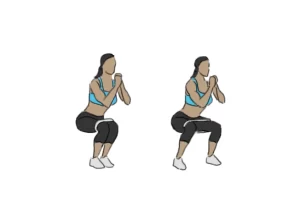
How to Lateral Squat Walk:
- Optional: Wrap a resistance band across your lower thighs just above your knees or around your ankles.
- Pose with your feet hip-width away.
- Push the booty back and stoop down while maintaining a tall spine and an erect posture in the chest.
- Keep band tension as you remain in your squat and slowly advance ten motions to the right. Reset, then while still in the squat position, take ten steps to the left.
Curtsy Lunge
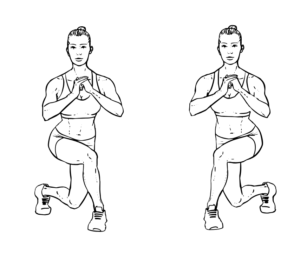
How to Curtsy Lunge:
- Your arms should be at your sides while you stand with your feet hip-distance apart.
- As you lunge underneath your left leg with your right foot, keep your chest raised.
- With your back knee just a few inches off the floor, lunge down.
- Return to an upright position gradually. On the other side, repeat.
Ball Squeeze
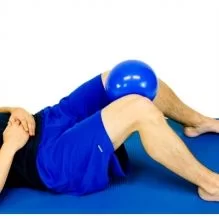
How to Ball Squeeze:
- Standing, spread your feet to hip-width.
- Lie on your back and place an exercise ball between your thighs.
- You should be sitting in a high squat after pushing the booty back.
- Tension the ball with your thighs for ten seconds, then release it and do it again.
Clamshell
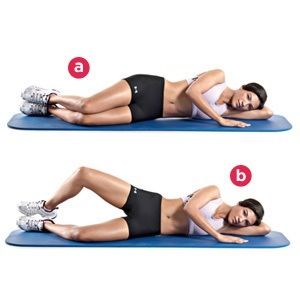
How to Clamshell:
- Verify that your head, hips, and heels are in one continuous plane while you lay on your side. To steady the body, place your fingertips on the ground in front of you.
- Kneel in front of you.
- Keep your feet firmly planted on the ground and raise your top knee to your hip before lowering it back down. When you have completed all the reps, continue on the opposing side.
Glute Kickbacks
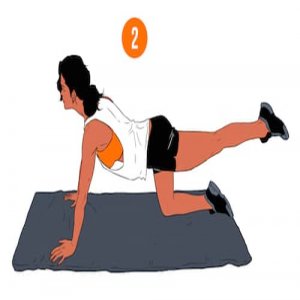
How to Glute Kickbacks:
- Optional: Wrap a resistance band over your ankles or place it just above your knees on your lower thighs.
- Place your feet hip-width apart as you stand. As a balancing aid, lean against a wall or a firm chair. Maintain a long spine by using your glutes and core.
- Straighten your right leg and float it up behind you. Slowly descend to tap the floor lightly.
- When you have completed the repetitions, switch sides.
Plié Squat

How to Plié Squat:
- Place your feet broader than shoulder-width apart when standing.
- For your feet to face in the same way as your knees, point them outward at an angle between 45 and 90 degrees.
- With your back erect and your knees slightly bent, sit comfortably.
- Put your hands on your thighs or hips and tighten your abdominal muscles.
- When you feel safe going any further, lower yourself into a squat until your thighs are level to the ground.
- Continue for a few seconds with your back erect.
- Repeat as necessary.
Inner Thigh Heel Pulses
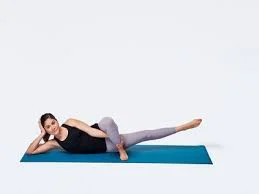
How to Inner Thigh Heel Pulses:
- Ensure that your head, hips, and heels are in one continuous plane while you lay on your side.
- To stabilize the body, put your fingertips on the ground. If you want a harder challenge, lift your upper arm to the ceiling.
- Press your heels together, contract your glutes, and externally rotate your toes.
- Try to hold up for ten seconds while raising both legs approximately an inch above the floor, then lower them both back down.
- Be careful to, continue on the opposite side.
Glute bridge with prop squeeze
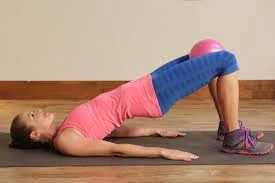
How to Glute Bridge with prop Squeeze:
- Lie face up on the ground.
- Kneel and plant your feet firmly on the floor.
- Put the prop in the space between your thighs.
- Exhale as you elevate your hips with the help of your hamstrings and glutes.
- To tap into your inner thighs, forcefully press on the prop.
- Continue for two seconds or so.
- Back off a bit.
Skater
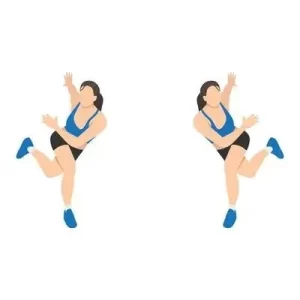
How to Skater:
- Standing with your feet together, knees slightly bent, and abs tightened is a good position.
- Jump to the left while allowing yourself to leave the ground by pushing off with your right leg.
- Lift your right leg slightly behind as you land on your left leg and make a little curtsy lunge that is bent forward at the hip.
- To finish the first full rep, hop briefly back to the right side.
Criss Cross Flutter Kicks
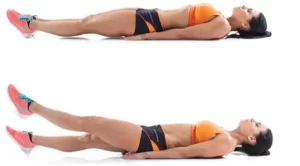
How to Criss Cross Flutter Kicks:
- Your arms should be by your sides as you lay straight on your back.
- Raise your legs off the ground by extending them straight.
- One foot should be placed on top of the other as you spread your legs across the floor and then pull them back together.
- Once your legs are together, spread them out once more before switching which foot is on top.
Cable Hip Adductions
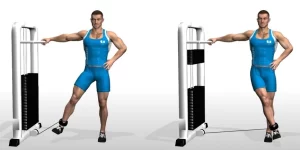
How to Cable Hip Adductions:
- Place your ankle strap on and adjust the weight of your cable machine before connecting it to the cable.
- Hold something to assist you with balance and rotate your body so that the leg with the rope is closest to the machine.
- Raise your leg to the side in front of your immobile leg while maintaining its straightness.
- Before letting go and returning it to the beginning position, bring it across as far as you can.
Scissor Legs Plank
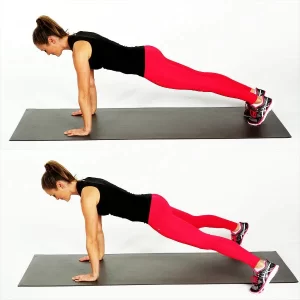
How to Scissor Legs Plank:
- Find a surface where you can place the piece of hardware you have access to while sliding your feet on it.
- Get into a plank position with your arms completely extended and your body in a straight line by putting your feet on the apparatus.
- Slide your feet apart, then bring them back together while maintaining a strong core.
- The desired number of reps should be performed in this movement.
Adduction Machine
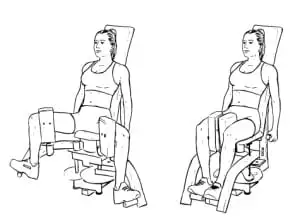
How to Adduction Machine:
- Sit down on the machine and make any necessary adjustments to the weight and cushions.
- As you crouch down, draw your knees together while maintaining a flat back against the seat back.
- Before repeating, slowly extend your legs again.
Single-Leg Circle
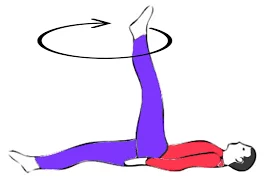
How to Single-Leg Circle:
- Lie face up with your arms at your sides, palms down. Raise the left leg and point the left foot upward as if to touch the ceiling with the toes.
- Move the left leg a little bit outside. Afterward, as you inhale, raise your left leg while keeping your hips still and draw a circle as if you were drawing on the ceiling. Prevent your left hip from rising off the floor.
- 5 times in a clockwise motion, then 5 times in an anticlockwise direction, trace the circle. Alternate sides; repeat.
Summary:
In conclusion, an effective inner thigh workout can contribute to overall lower body strength, stability, and aesthetic goals. By incorporating targeted exercises that engage the inner thigh muscles, such as leg lifts, squats, lunges, and lateral movements, you can develop muscle tone and definition in that area. However, it’s important to remember that spot reduction is not a guaranteed method for losing fat.
A comprehensive approach that combines a balanced diet, cardiovascular exercise, and full-body strength training will yield the best results for both inner thigh toning and overall fitness. If it comes to observing growth, regularity is essential. Gradually increasing the intensity and resistance of your workouts, maintaining proper form, and giving your muscles adequate time to recover are all essential factors in achieving your inner thigh goals. Additionally, listening to your body, staying hydrated, and incorporating flexibility exercises can help prevent injuries and enhance your workout experience.
Ultimately, while an inner thigh workout can play a role in achieving the desired muscle tone, it’s important to approach fitness holistically and focus on overall health and well-being. Always consult with a fitness professional or healthcare provider before starting any new exercise routine, especially if you have any pre-existing medical conditions or concerns.
FAQs:
How can I prevent muscle imbalances while working on my inner thighs?
To prevent muscle imbalances, make sure to work on all muscle groups in your legs, including the quadriceps, hamstrings, and calves. Incorporating a well-rounded leg workout routine can help maintain balanced muscle development.
Should I use weights or resistance bands for inner thigh exercises?
Using weights or resistance bands can increase the intensity of your workouts and promote muscle growth. However, it’s important to start with light weights or bands and gradually increase the resistance to avoid overstraining.
Can I spot-reduce fat from my inner thighs?
Spot-reducing fat from a specific area is generally not effective. To reduce fat in any area, including the inner thighs, you need a combination of overall fat loss through a balanced diet and regular cardiovascular exercise.
How long will it take to see results in my inner thighs?
The time it takes to see results varies from person to person and depends on factors like genetics, consistency, diet, and the intensity of your workouts. Most changes may start within a few weeks to a few months

